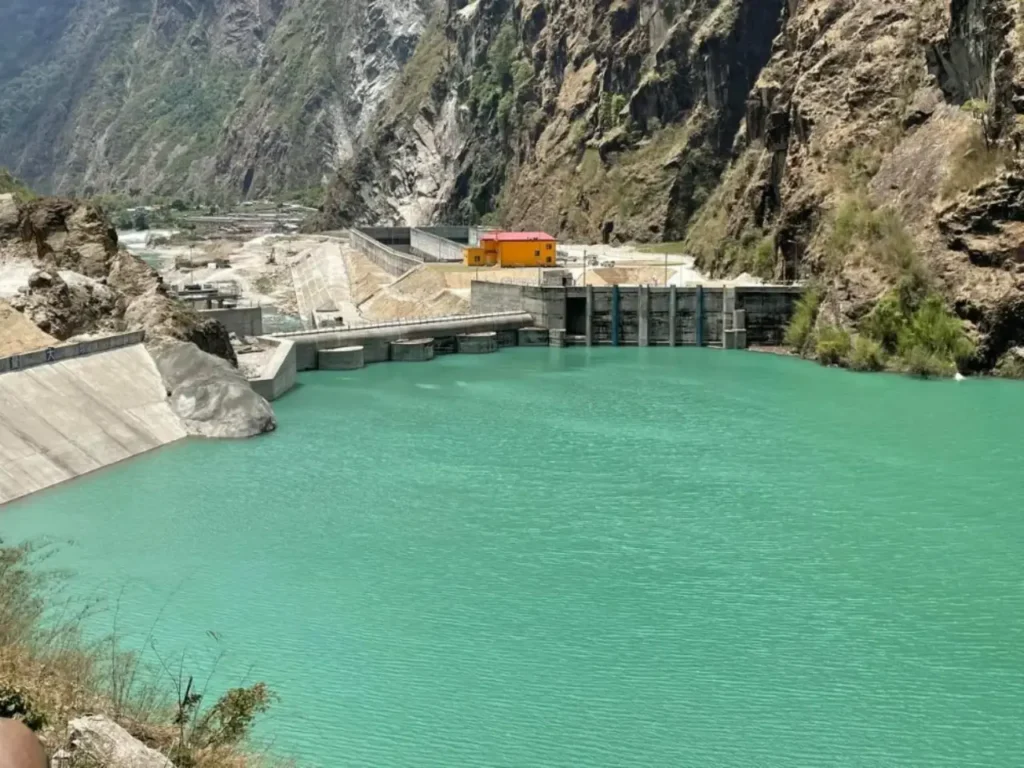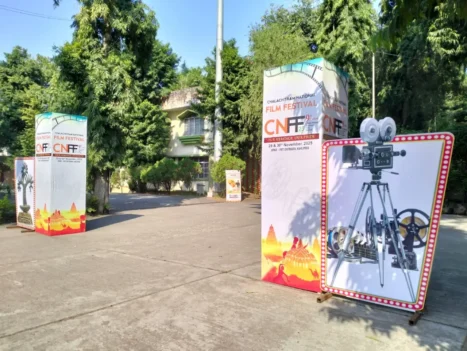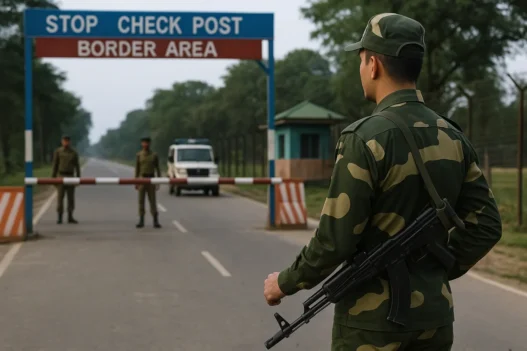Not too long ago, Nepal was a country in darkness. Entire cities and villages lived under the shadow of “load-shedding,” the dreaded blackouts that stretched up to 18 hours a day. Students bent over books in the dim glow of candles, factories stood still or roared on expensive diesel generators, and even hospitals struggled to keep life-saving equipment running.
For a nation blessed with over 6,000 rivers and rivulets, the irony was painful: water was abundant, yet electricity was painfully scarce.
Today, the story is strikingly different. Nepal has flipped the script, moving from shortages to surpluses. Not only is it free of load-shedding, but also it has become an exporter of electricity — selling power to India and, for the first time in history, to Bangladesh.
The Nepal Electricity Authority (NEA), marking its 40th anniversary recently, declared with pride that the nation had entered “the era of electricity exports.”
“Once synonymous with shortages, Nepal is now a surplus power producer,” said NEA Managing Director Hitendra Dev Shakya. His words capture the extraordinary turnaround of a country once crippled by darkness but now on the path to finding prosperity through light.
A turning point
The turning point came in 2023/24, when Nepal, for the first time ever, exported more electricity than it imported. By 2024/25, it sold 2,380 gigawatt-hours of power to India, while buying back only 1,712 GWh in the dry season — a net surplus that earned nearly NPR 1,747 crores.
Just a few years ago, this would have seemed unimaginable. Nepal was once dependent on importing power from India to survive. But within three years of gaining access to India’s competitive electricity market in 2021, Nepal transformed into a net exporter.
And the story didn’t stop at India’s borders. In 2024, Nepal began exporting electricity to Bangladesh — 40 MW during the monsoon months, carried on India’s transmission grid.
This modest but historic step, enabled by a tripartite agreement signed on October 3, 2024 between Kathmandu, New Delhi, and Dhaka, symbolises more than a new revenue stream. It is a glimpse of what South Asia can achieve when nations choose to cooperate rather than compete.
Nepal-India cooperation: The decisive factor
The transformation in Nepal’s power sector would not have been possible without India’s cooperation. From granting market access, to purchasing electricity, to allowing transmission for Bangladesh exports, India has played a very important role.
Nepal-India cooperation has been one of the prime facilitators of the South Asian cross-border electricity trade. A chain of bilateral agreements, policy convergence, and the establishment of high-capacity transmission lines like the 400 KV Dhalkebar-Muzaffarpur cross-border line have made electricity trade between the two neighbours hassle-free.
Not only did India provide Nepal with a sure market for its wet-season surplus power but also enabled diversification of India’s power mix with the import of renewable power supplies.
The Nepal-India partnership has also laid the foundation for regional energy integration. With India acting as a transit hub, Nepal’s hydropower can be supplied to other South Asian markets, beyond Bangladesh.
Such initiatives mark a significant shift from aid-driven relations to mutually beneficial economic cooperation. By strengthening grid connectivity, simplifying trade regulations, and ensuring long-term power purchase agreements, Nepal and India are transforming energy from a domestic challenge into a shared regional opportunity.
This cooperation has the potential to contribute to energy security, climate goals, and economic growth across the subcontinent.
Rivers that connect nations
The power flowing out of Nepal is more than electricity; it is the current of regional integration. India, by opening its grid, has become the facilitator — turning Nepal into a generator and Bangladesh into a consumer. In doing so, the three countries have created a living example of how shared resources can weave tighter bonds.
For Nepal, electricity exports offer relief from a crushing trade deficit long fuelled by petroleum imports. For India, surplus Nepali power helps meet its own rising demand while reinforcing its position as the hub of South Asia’s energy market. And for Bangladesh, Nepali rivers offer a cleaner, cheaper alternative to coal.
Nepal has ambitious plans of exporting 5,000 MW of electricity to Bangladesh by around 2035. The 900 MW Upper Karnali Hydropower Project, which is being developed by India’s GMR Group in Nepal, has already agreed to export 500 MW of power to Bangladesh.
Even Bangladesh has demonstrated far more interest, saying that it is in a position to import 3,000–4,000 MW Nepali energy right away. Long-term consistent demand potential is also seen from Bangladesh’s plans to import 9,000 MW by 2040.
In a region often defined by rivalry, this three-way setup is a rare story of convergence. It suggests that water and energy — the most basic elements of life — could be what finally pushes South Asia toward cooperation.
The change in thinking also indicates the fast-evolving regional integration of the energy sector and marks how Nepal is preparing as a serious hydropower exporter.
The role of the private sector
Nepal’s hydropower revolution is not just a state-driven story. Private companies and ordinary Nepalis have become its heartbeat. Over 200 private hydropower projects are already operational, and more are under construction.
Independent power producers now contribute more than half of the country’s generation capacity, and some 6.5 million citizens own shares in hydropower projects. For many, it is both an investment and a source of pride — proof that rivers flowing through their valleys can power not only their homes but also neighbouring countries.
The benefits are already visible. By the end of 2024, as much as 98% of Nepal’s population had access to the national grid — among the highest coverage rates in South Asia. Per capita consumption rose steadily, industries restarted, and new livelihoods emerged. What once symbolised stagnation has now become a catalyst for growth.
Infrastructure: Transmission and distribution
Nepal’s challenge is not just producing electricity but transmitting it. Without adequate transmission lines, surplus energy cannot reach markets.
NEA has thus invested significantly in distribution and transmission. As of 2024, transmission lines extended to 6,760 circuit kilometers, adding 253 km last year alone.
New transmission lines such as the Khimti-Bahrabise 400 kV and Chilime-Trishuli 220 kV were completed. Substation capacity was expanded by 1,073 MVA in the last fiscal year alone.
On the distribution side, over 9,336 circuit km of lines and 3,151 transformers were added. This network is what makes large-scale exports possible.
Ambitious future plans
Looking ahead, Nepal has set highly ambitious targets. Dudh Koshi (670 MW), Upper Arun (1,063 MW), Uttar Ganga (828 MW), and Karnali Chisapani (10,800 MW), which is one of the largest planned projects in South Asia, are some of the major semi-reservoir and reservoir projects under planning and construction.
By 2035, Nepal wants to export at least 15,000 MW of power, with a specific commitment to selling at least 10,000 MW to India.
Cross-border transmission projects are also advancing. Among the major ones are the Inaruwa–New Purnia 400 kV line with India and the Chilime–Rasuwagadhi–Kerung 400 kV line with China.
When completed, these cross-border connections will enhance Nepal’s regional export potential, selling electricity to not just India and Bangladesh but ultimately to China and beyond.
Opportunities and vulnerabilities
The promise of hydropower, however, is not without its challenges. Nepal still produces most of its surplus during the rainy season but struggles in the dry winter months, forcing continued imports. Similarly, there are transmission bottlenecks because the current lines can only export about 3,500 MW, far below potential.
Another major challenge comes in the form of wrong policies and bureaucratic delays. Investors often complain of delays in Power Purchase Agreements, licensing, and grid access.
And above all, Nepal’s export success depends heavily on India’s cooperation — an opportunity, but also a vulnerability.
India has so far played the role of both gatekeeper and enabler — granting Nepal access to its market, buying surplus power, and even facilitating the Bangladesh deal. For Kathmandu, long-term stability will hinge on ensuring this cooperation evolves into trust-based, win-win partnerships.
Diversifying, by linking to China’s grid in the future, may provide additional security, but India’s role will remain decisive.
Lighting a region together
Nepal has entered the era of electricity exports. The darkness of load-shedding has already become a thing of the past. What lies ahead is a brighter possibility of prosperity, provided that the country, together with the help of its neighbors, can harness the full power of its rivers.
In short, Nepal’s journey from 18-hour blackouts to becoming a net power exporter is a story of resilience, reform, and vision. But its significance extends beyond Nepal’s borders. It shows how shared natural resources can knit nations closer, not just in commerce but also in trust.
If Nepal achieves its ambition of generating over 28,000 MW and exporting 15,000 MW by 2035, electricity could become its single largest foreign exchange earner, easily bringing in NPR 50,000 to 70,000 crores annually. More importantly, it could anchor a new era of regional cooperation — where electricity grids link economies, rivers fuel growth, and people share in prosperity.
In South Asia, a region often trapped by old disputes, Nepal’s hydropower revolution carries a quiet message: when nations choose to harness what they share, the future can be brighter for all.







